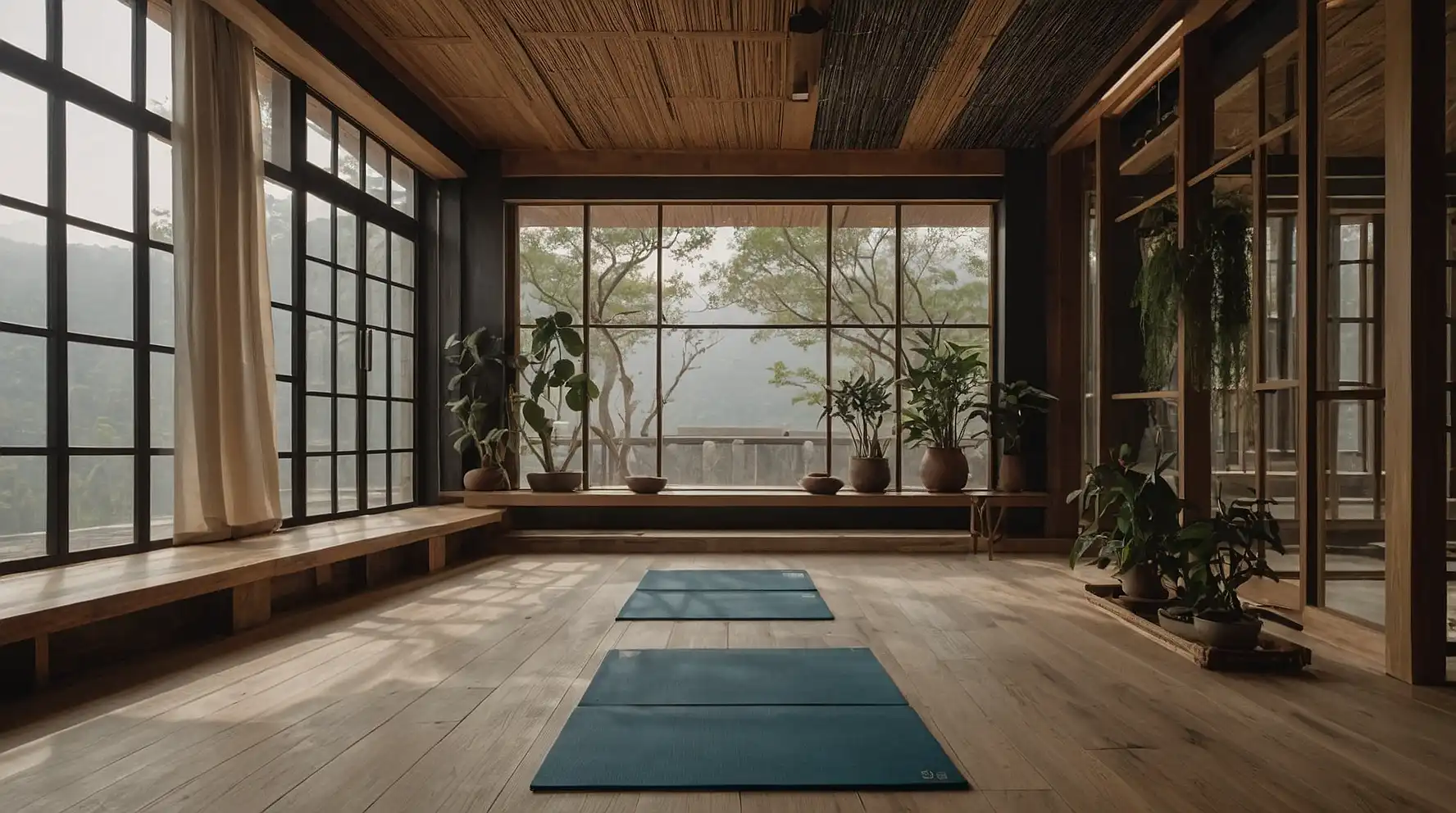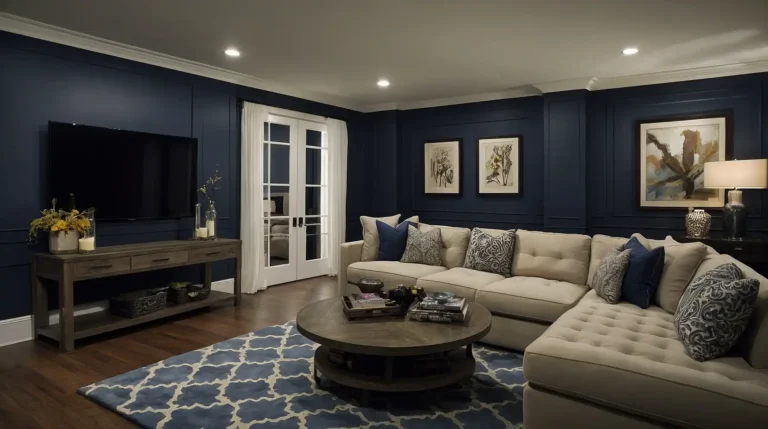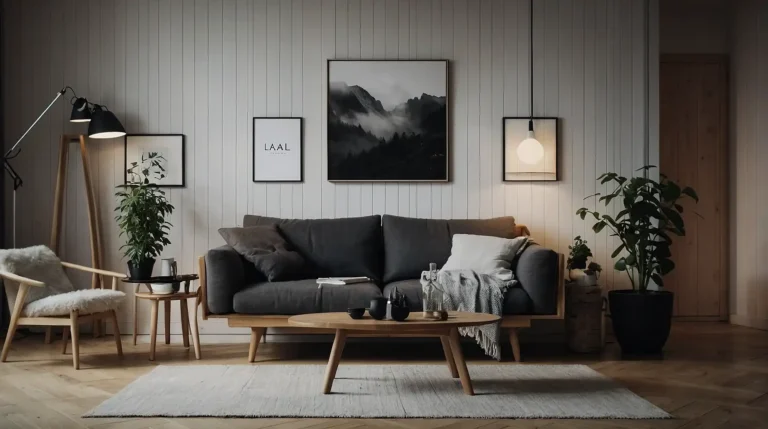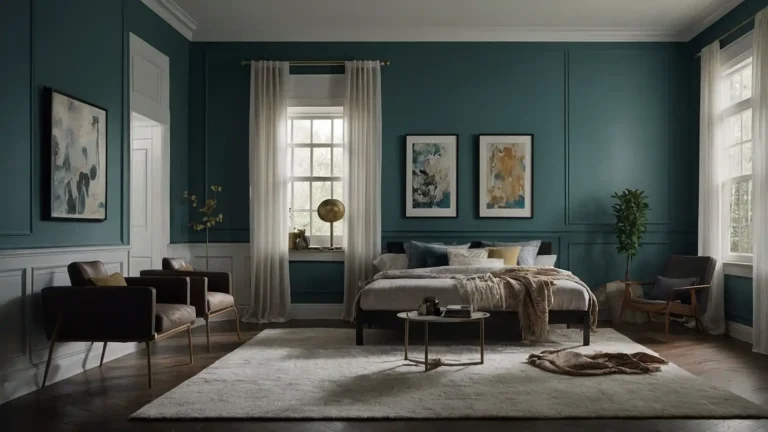27 Japandi Designed Yoga Studios Ideas
Japandi design merges Japanese minimalism with Scandinavian warmth perfectly. This aesthetic creates serene yoga spaces that promote mindfulness and inner peace.
The style emphasizes natural materials, clean lines, and functional beauty. Neutral colors and uncluttered spaces enhance your practice and meditation.
These 27 ideas bring Japandi principles to yoga studios. You’ll discover how to create peaceful sanctuaries that support every aspect of your wellness journey.
1: Natural Wood Flooring
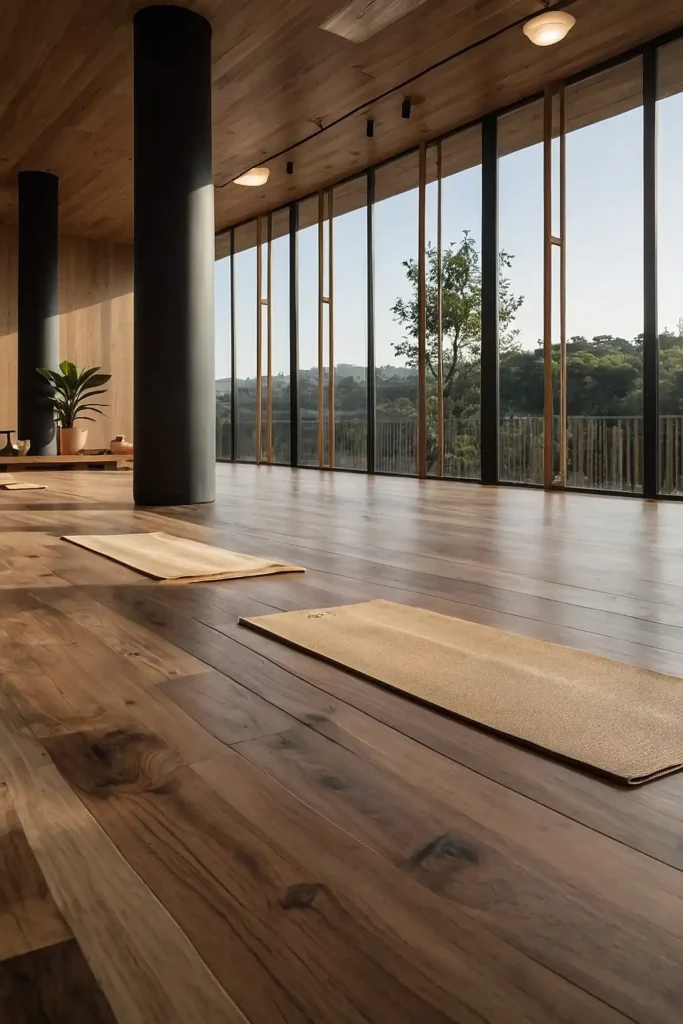
Install warm oak or bamboo flooring that feels grounding underfoot. Choose wide planks with natural grain patterns that add subtle texture and visual interest.
Wood provides natural grip for yoga poses safely. The warm surface feels comfortable during floor sequences and meditation practices.
Add area rugs in natural fibers for extra cushioning. This foundation creates an immediate connection to nature and Japanese design principles.
2: Shoji Screen Room Dividers
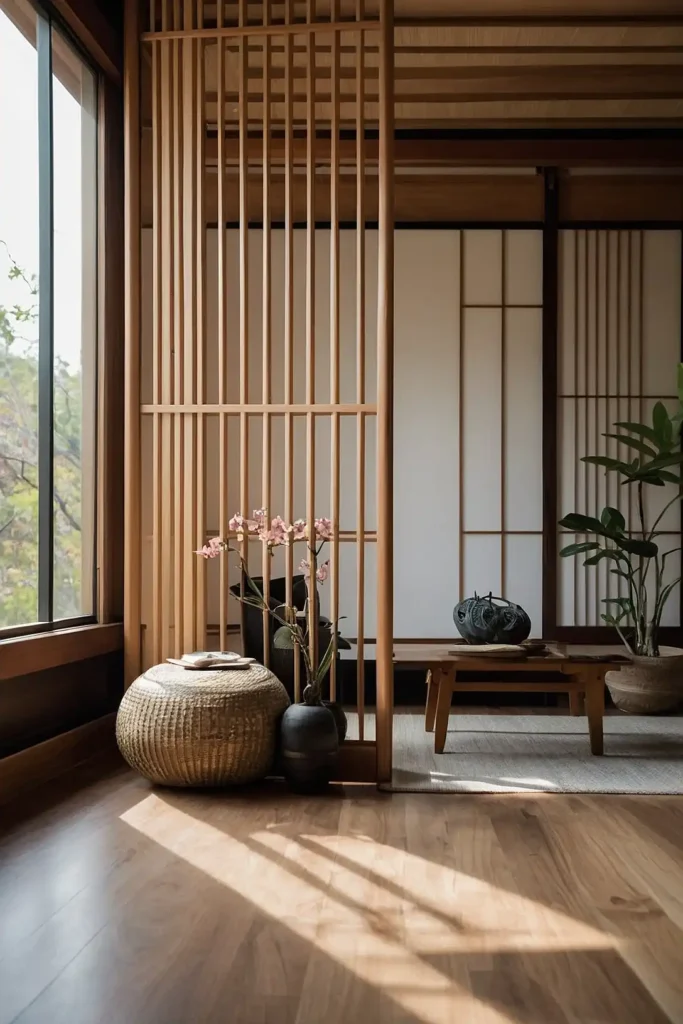
Use translucent paper screens to create flexible spaces within studios. Install tracks that allow easy reconfiguration for different class sizes and types.
Screens filter light beautifully while maintaining openness. The geometric patterns add authentic Japanese aesthetic without overwhelming the space.
Add LED backlighting for dramatic evening ambiance. These versatile dividers embody both Japanese tradition and Scandinavian functionality perfectly.
3: Floor-to-Ceiling Windows
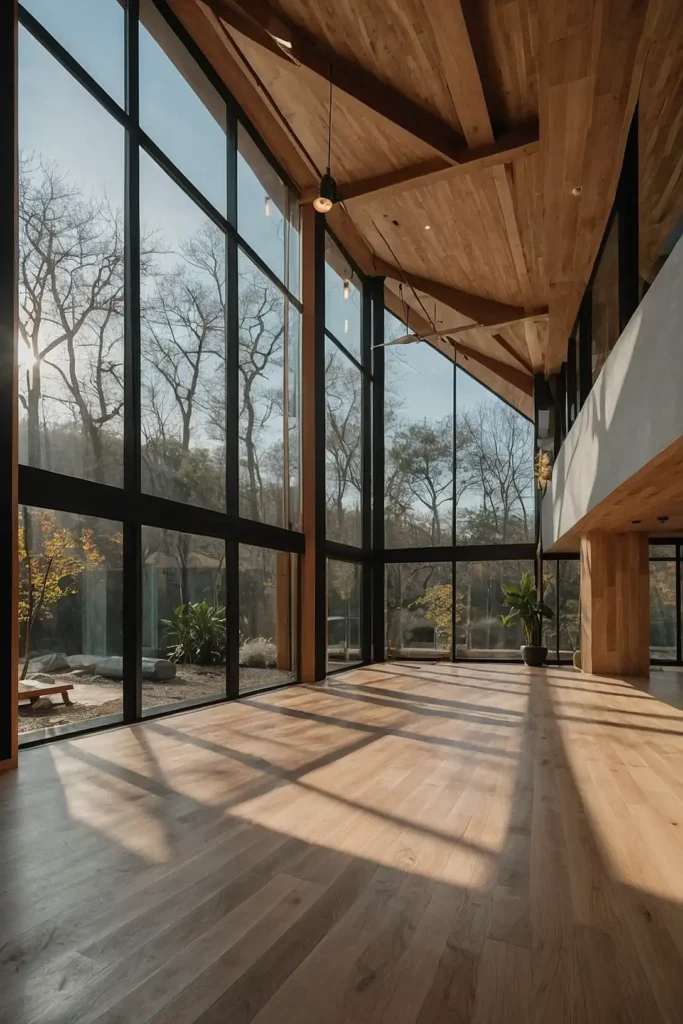
Install large windows that flood spaces with natural light. Choose minimal frames in natural wood or black metal for clean lines.
Natural light enhances mood and energy levels. Large windows create visual connection to outdoor nature and changing seasons.
Add white linen curtains for privacy and light control. This abundant illumination reduces need for artificial lighting during day classes.
4: Minimalist Storage Solutions
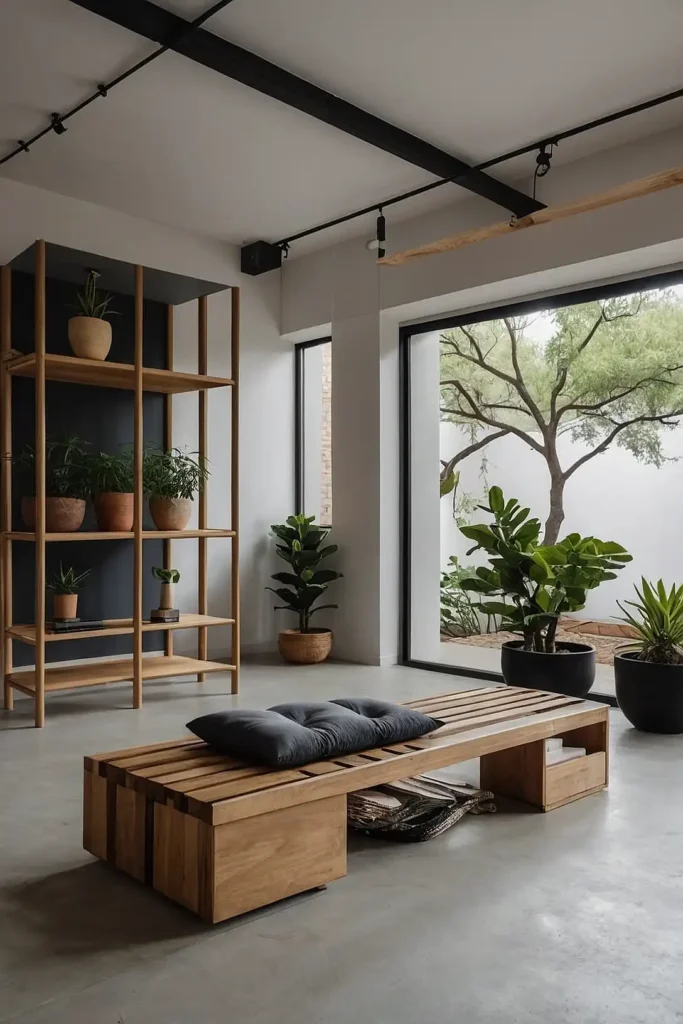
Build hidden storage compartments that maintain clean aesthetics. Install built-in cubbies for mats, blocks, and personal belongings seamlessly.
Concealed storage eliminates visual clutter completely always. Clean lines preserve the meditative atmosphere while keeping essentials accessible.
Add natural wood doors that blend invisibly. This organized approach supports the Japandi principle of functional beauty.
5: Living Plant Walls
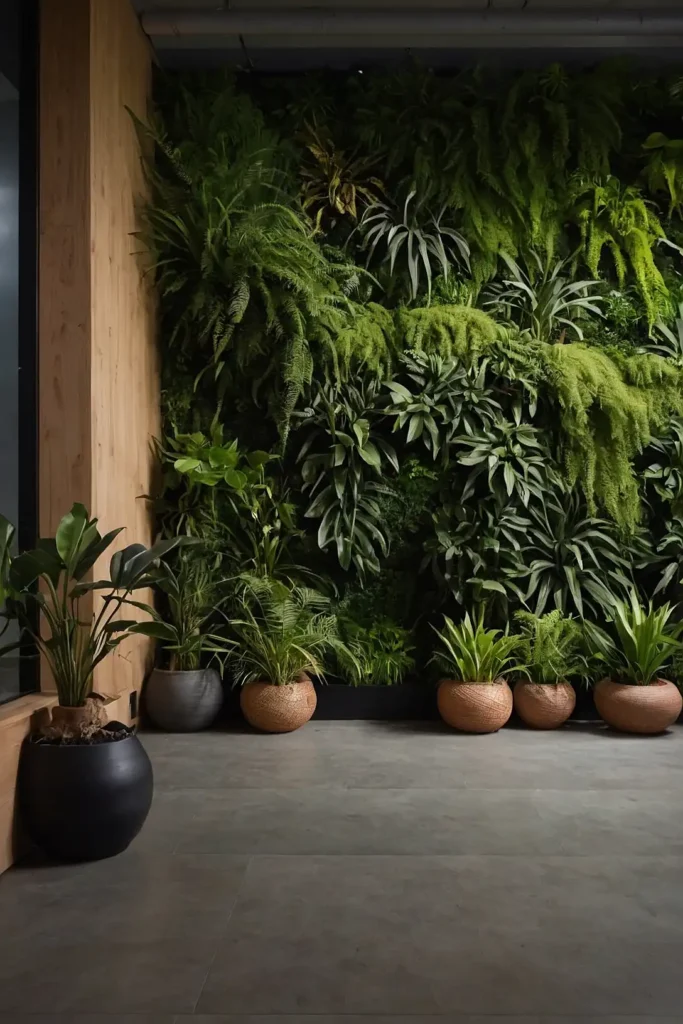
Create vertical gardens using air plants, ferns, and moss. Install simple mounting systems that showcase plants without overwhelming the space.
Plants purify air and add life energy. Living walls connect practitioners to nature while maintaining minimal visual impact.
Add automatic misting systems for easy maintenance. This biophilic element enhances both air quality and spiritual atmosphere.
6: Neutral Color Palette
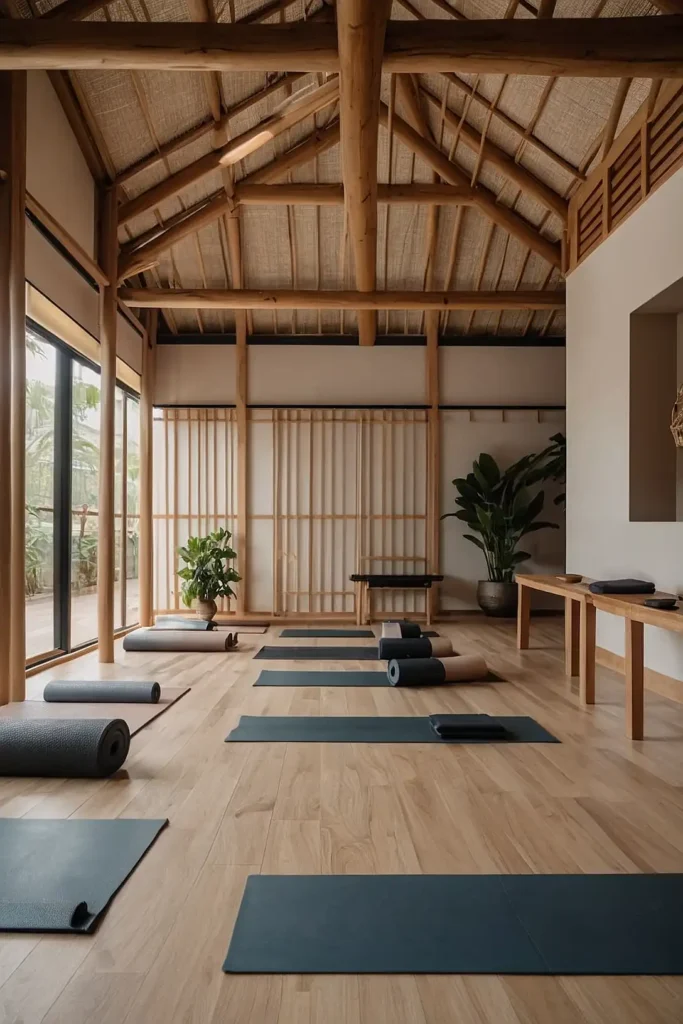
Paint walls in warm whites, soft grays, and natural beiges. Layer different neutral tones to create depth without visual distraction.
Neutral colors promote calm and focus naturally. The palette allows practitioners’ energy and movement to become the room’s focal point.
Add single accent colors through natural materials only. This restrained approach creates timeless elegance that never feels dated.
7: Bamboo Wall Panels
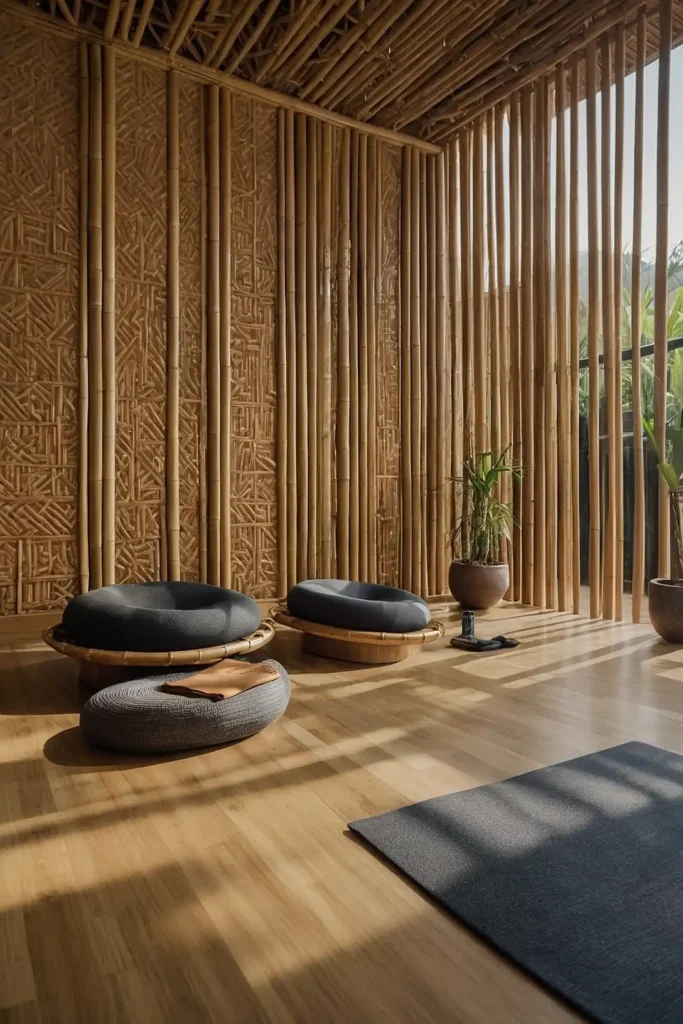
Install vertical bamboo slats as accent walls or room dividers. Choose natural finishes that highlight the material’s organic beauty and texture.
Bamboo adds warmth while maintaining clean lines. The sustainable material aligns with mindful living principles and environmental consciousness.
Add hidden LED strips for subtle backlighting effects. This natural element brings authentic Japanese aesthetics to modern spaces.
8: Platform Meditation Areas
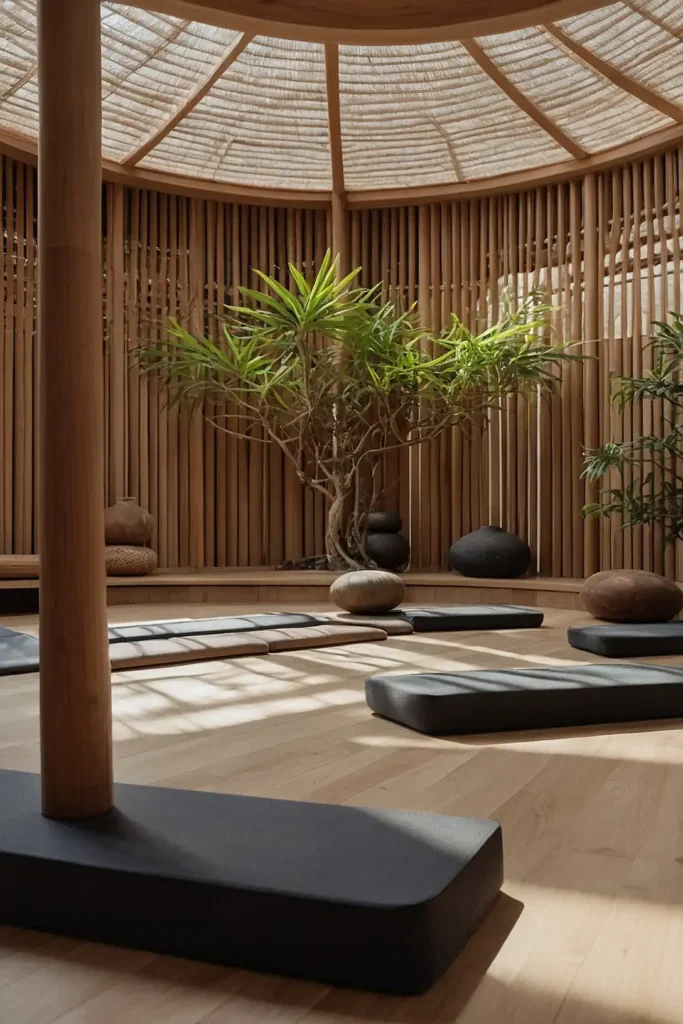
Build raised wooden platforms for meditation and restorative practices. Create defined spaces that feel separate from active yoga areas.
Elevated areas provide psychological separation for different practices. Platforms define zones while maintaining visual flow throughout the studio.
Add built-in cushion storage beneath platforms discreetly. This dedicated space honors meditation’s importance in yoga tradition.
9: Paper Lantern Lighting
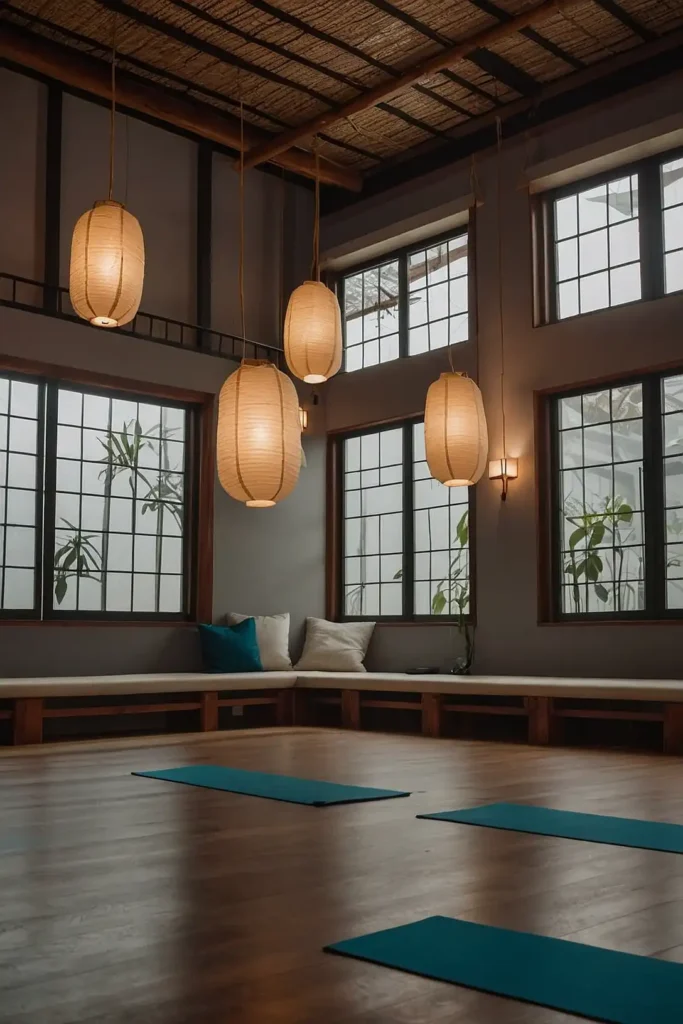
Hang spherical paper lanterns at varying heights throughout. Choose warm LED bulbs that create soft, diffused illumination.
Soft lighting reduces harsh shadows and promotes relaxation. Paper lanterns add authentic Japanese elements while providing functional illumination.
Add dimmer controls for different class moods. This warm lighting creates perfect ambiance for evening yin and restorative classes.
10: Natural Fiber Rugs
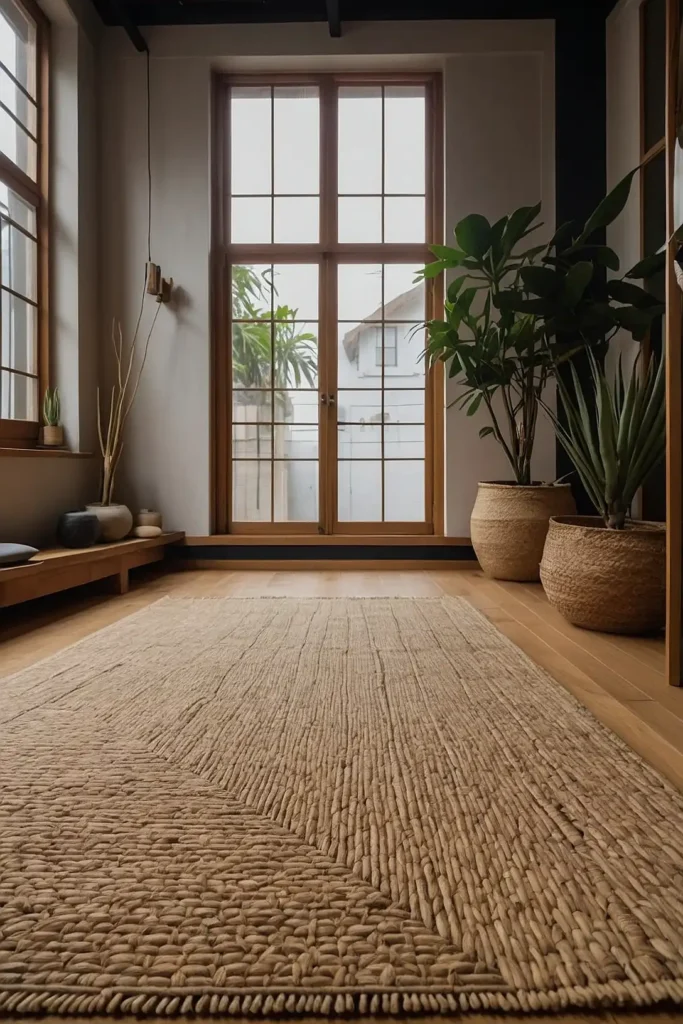
Layer jute, hemp, and wool rugs in neutral tones. Choose simple patterns or solid colors that complement the overall aesthetic.
Natural fibers add warmth and texture underfoot. Rugs define practice areas while providing extra cushioning for sensitive joints.
Add non-slip backing for safety during poses. This textural element brings Scandinavian coziness to Japanese minimalism perfectly.
11: Built-in Bench Seating
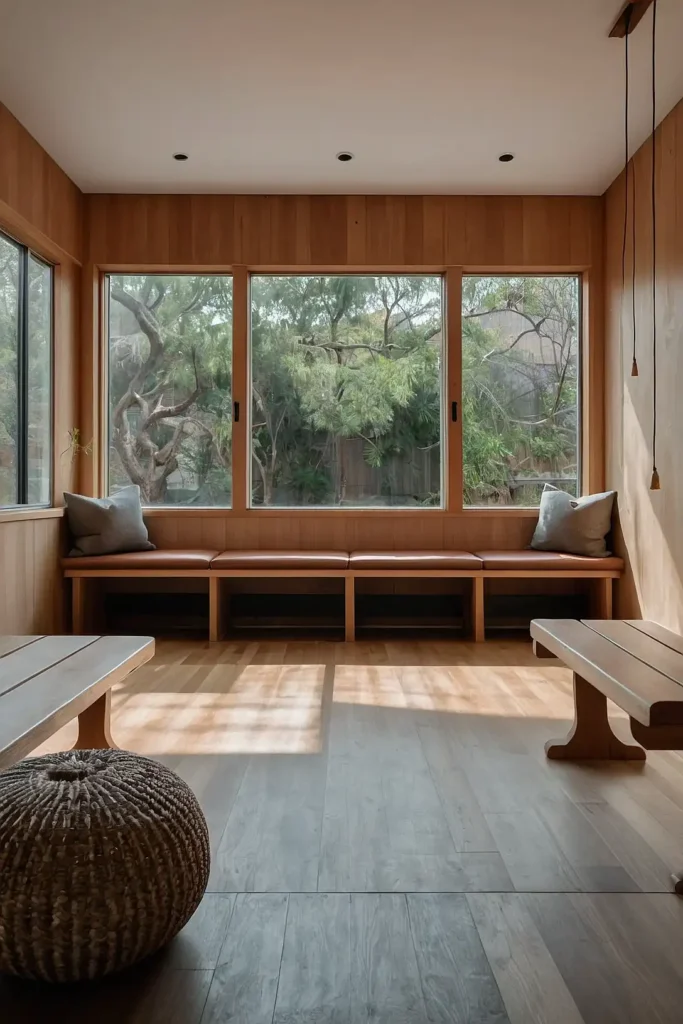
Install low wooden benches along walls for changing and relaxation. Add hidden storage compartments for shoes and personal items.
Built-in seating maintains clean lines while providing function. Benches offer convenient spaces for putting on shoes and brief conversations.
Add natural linen cushions for comfort and softness. This practical element embodies Japandi’s functional beauty principles completely.
12: Sliding Barn Doors
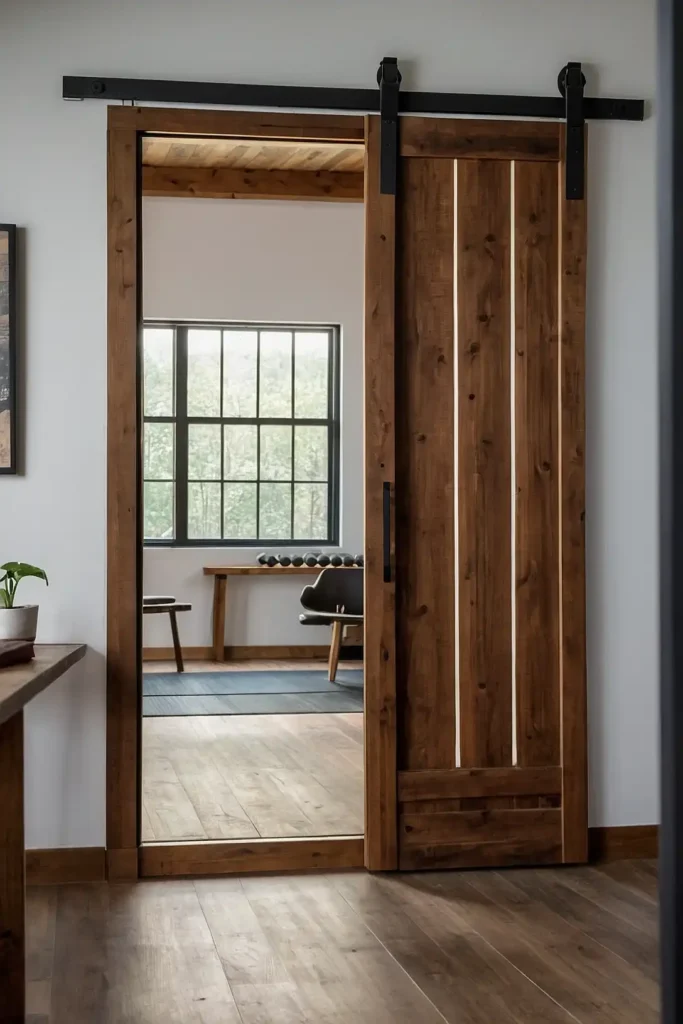
Install wide sliding doors in natural wood or painted white. Choose minimal hardware that emphasizes clean, contemporary lines.
Sliding doors save space while adding architectural interest. The functional design allows easy reconfiguration of studio spaces as needed.
Add soft-close mechanisms for quiet operation during classes. This practical element maintains peaceful atmosphere while providing flexibility.
13: Zen Garden Corner
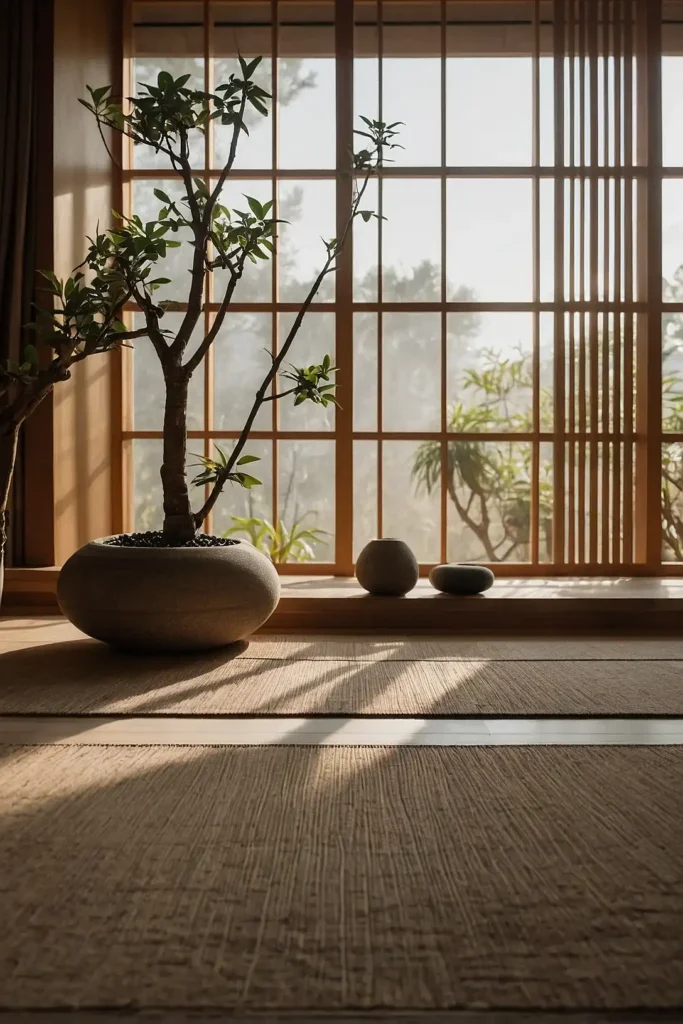
Create a small rock garden with raked sand patterns. Add a few carefully chosen stones and minimal greenery for contemplation.
Zen gardens provide focal points for meditation and mindfulness. The traditional element adds authenticity while supporting contemplative practices.
Add soft lighting to highlight textures and patterns. This peaceful corner offers space for personal reflection before classes.
14: Cotton Canvas Curtains
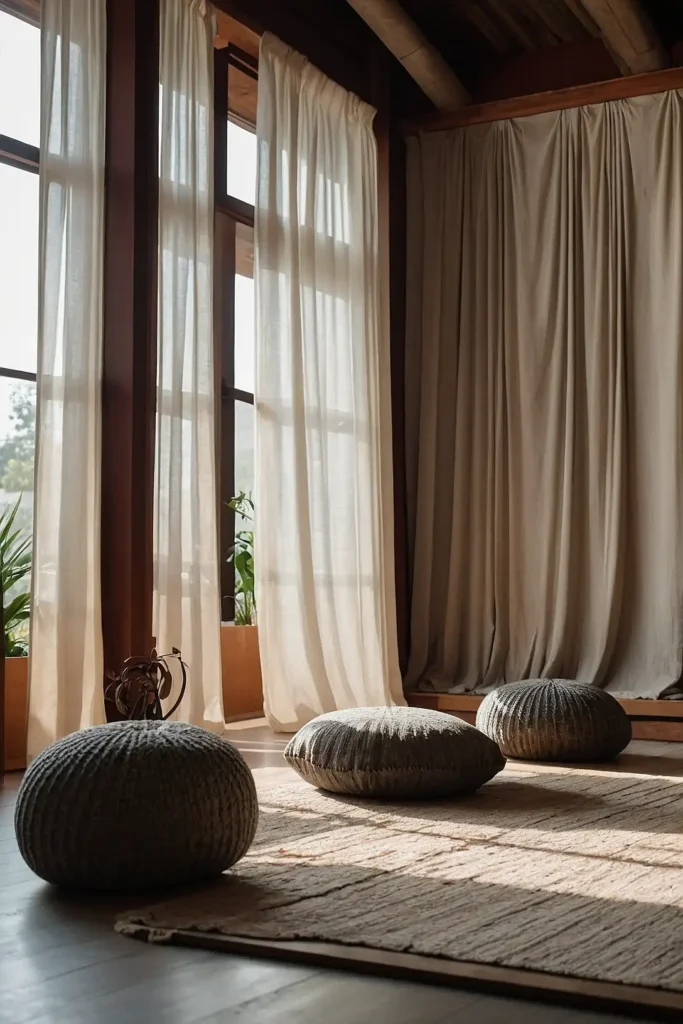
Hang simple white or beige cotton curtains for privacy. Choose minimal hardware and clean lines that don’t compete with architecture.
Natural fabrics soften hard surfaces while maintaining simplicity. Curtains provide privacy without blocking natural light completely when needed.
Add tie-backs in matching natural materials discreetly. This soft element adds Scandinavian warmth to Japanese minimalism perfectly.
15: Wooden Yoga Prop Storage
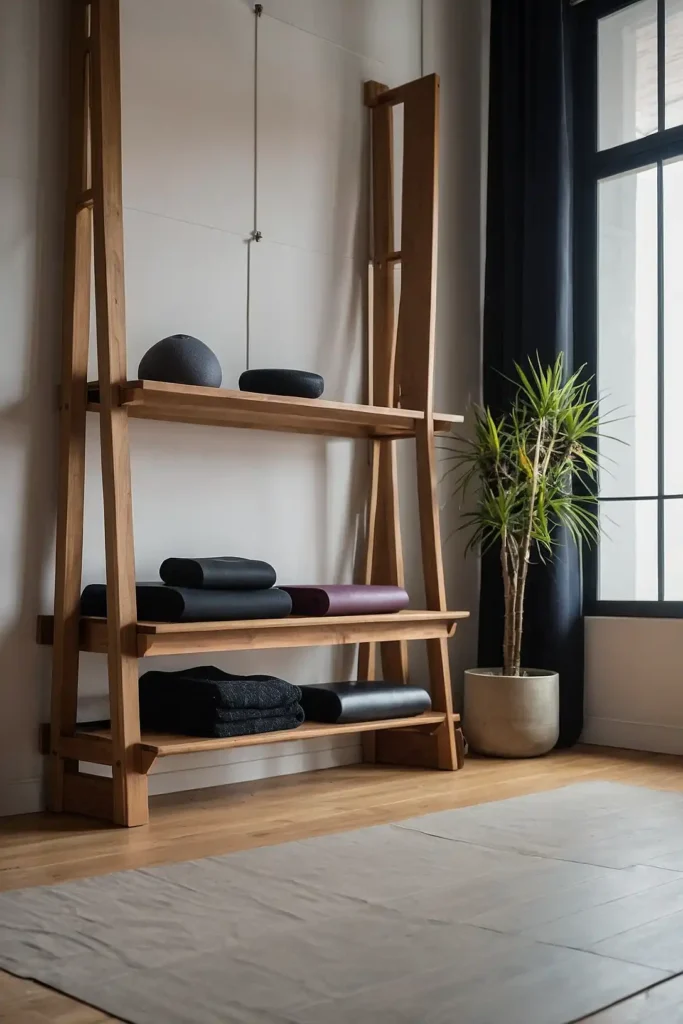
Build custom shelving for blocks, straps, and bolsters. Use natural wood with clean lines that integrate seamlessly with walls.
Organized props encourage proper alignment and safety always. Beautiful storage makes equipment feel like decorative elements rather than clutter.
Add labels in simple, minimal fonts consistently. This thoughtful organization supports both aesthetics and practical studio management.
16: Sound Absorbing Panels
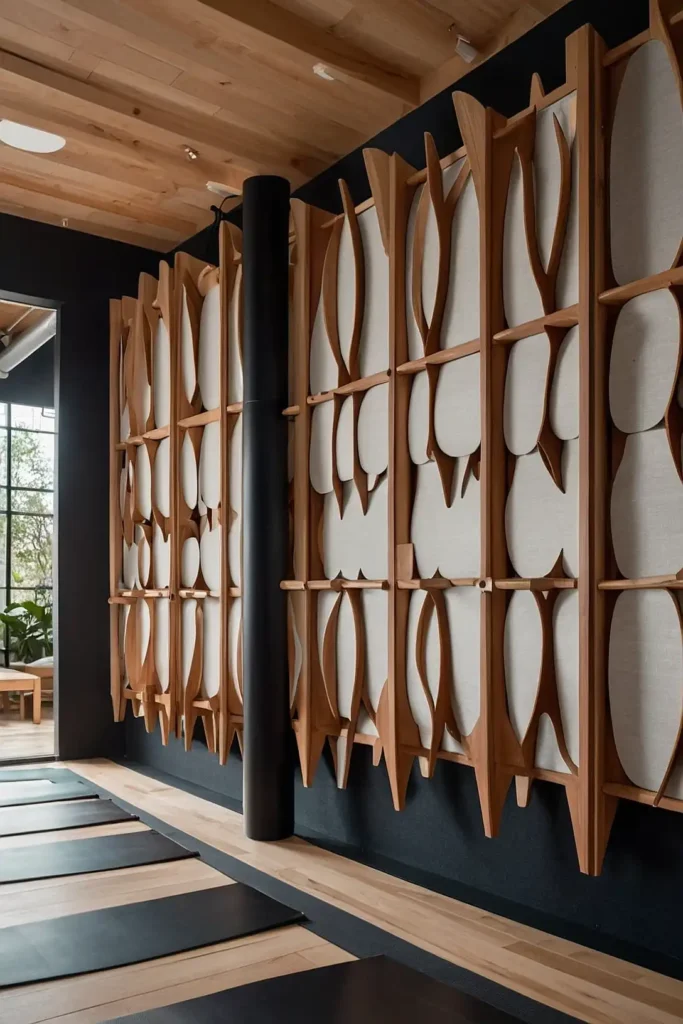
Install acoustic panels covered in natural linen or wool. Choose neutral colors that blend invisibly with wall treatments.
Sound control creates peaceful environments for practice and meditation. Acoustic treatment prevents echo while maintaining the studio’s serene atmosphere.
Add panels strategically to optimize sound without visual disruption. This technical element supports the meditative quality essential to yoga.
17: Temperature Control Zones
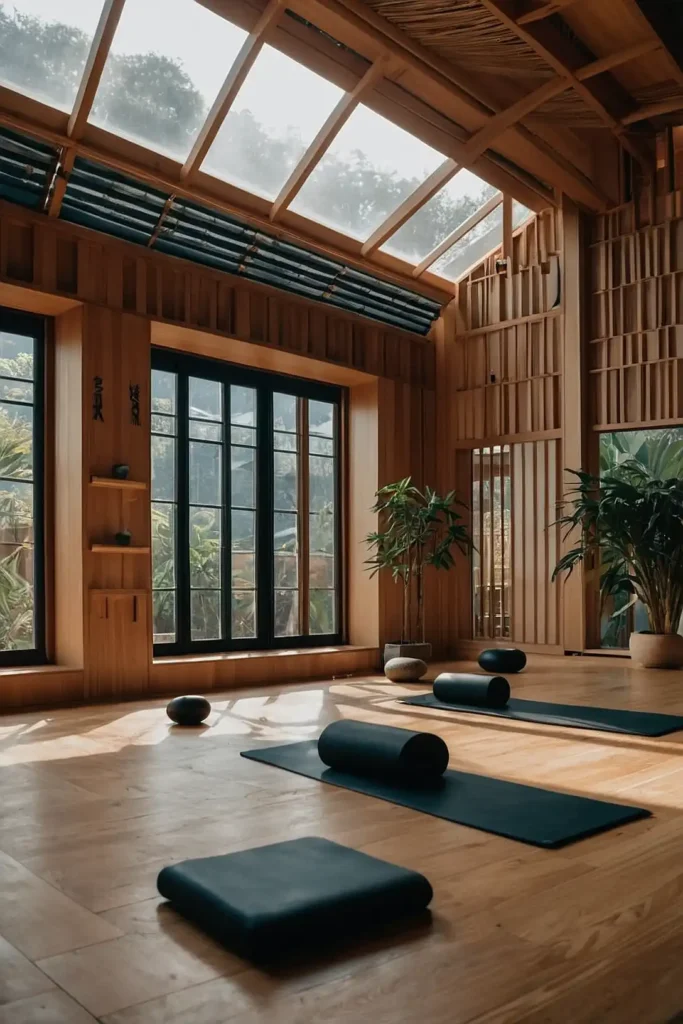
Install radiant floor heating for consistent, gentle warmth. Add ceiling fans with wooden blades for air circulation during heated classes.
Comfortable temperature supports deeper practice and relaxation always. Radiant heating feels natural and doesn’t create distracting air movement.
Add programmable controls for different class types. This invisible comfort system maintains focus on practice rather than environmental discomfort.
18: Natural Ventilation System
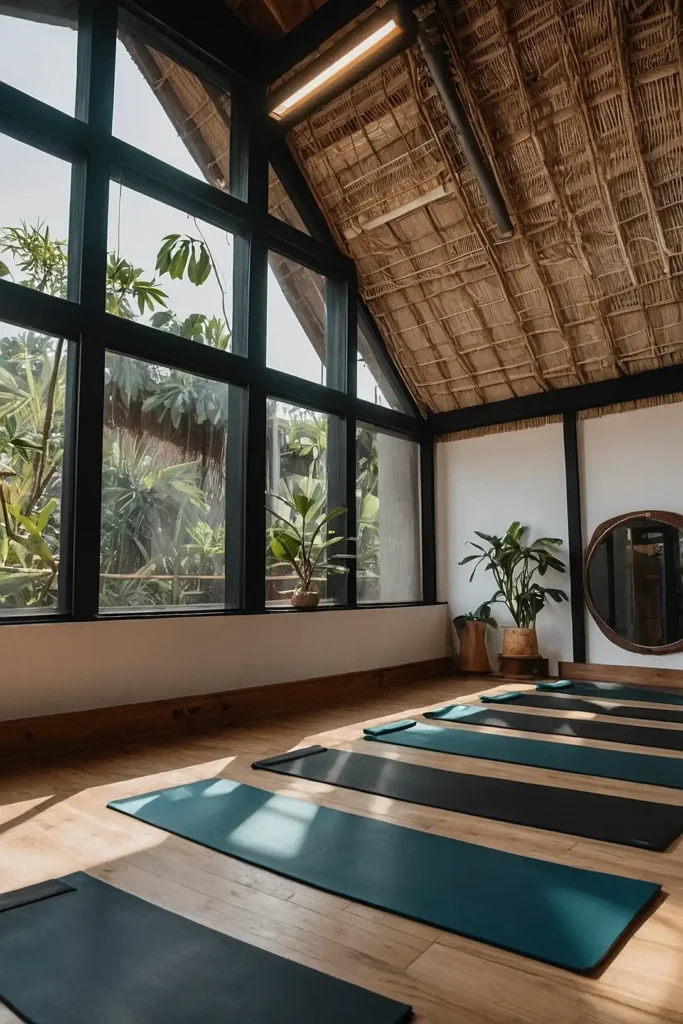
Design operable windows and vents for fresh air circulation. Install screens that maintain insect control while preserving clean aesthetics.
Fresh air enhances energy and prevents stuffiness naturally. Natural ventilation reduces reliance on mechanical systems and connects to outdoor environment.
Add automated controls that respond to air quality. This sustainable approach aligns with mindful environmental stewardship and wellness.
19: Meditation Bell Display
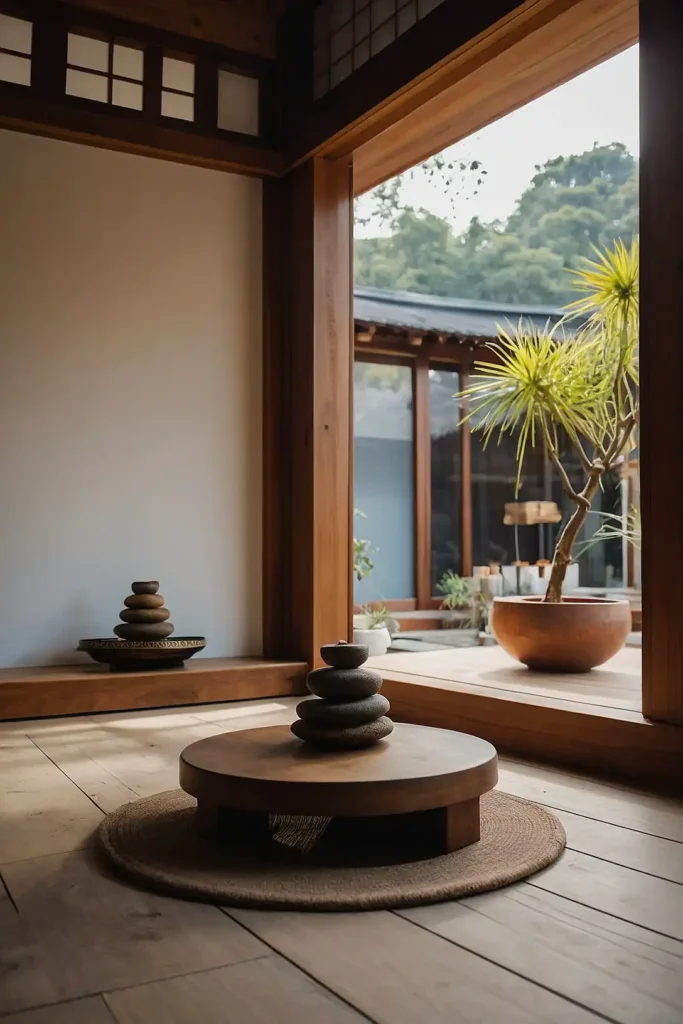
Mount beautiful singing bowls or bells on simple wooden shelves. Create an altar-like display that honors sound’s role in practice.
Sound tools enhance meditation and class transitions meaningfully. Beautiful display elevates utilitarian objects to decorative status while maintaining accessibility.
Add soft lighting to highlight metallic surfaces subtly. This ceremonial element adds spiritual depth to the physical practice space.
20: Floor Cushion Seating
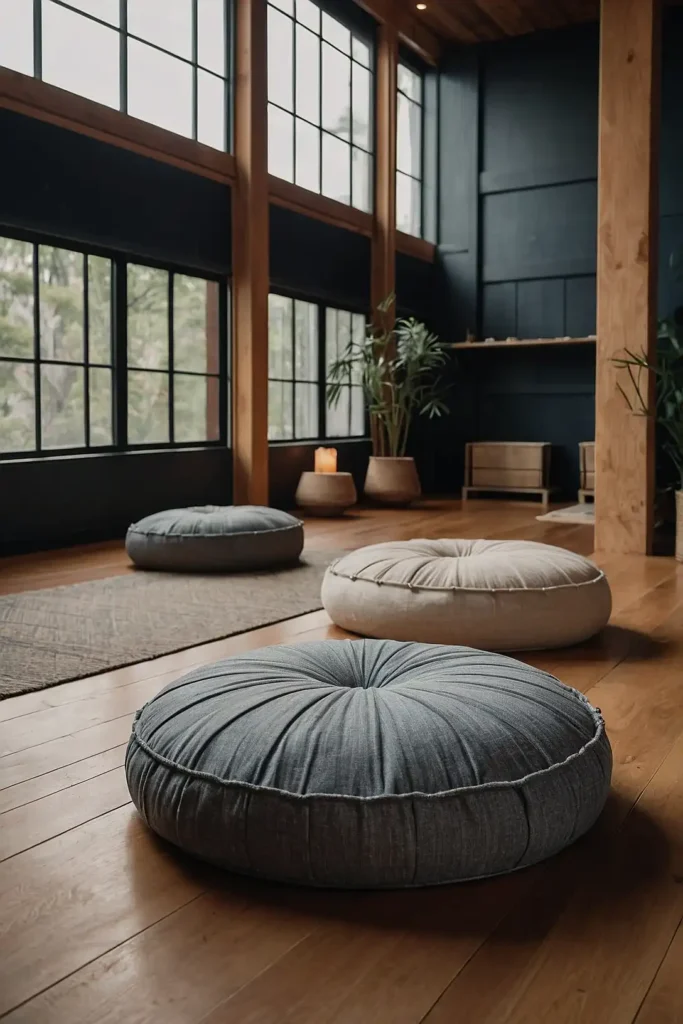
Provide floor cushions in natural fabrics for meditation circles. Choose firm filling that supports proper posture during seated practices.
Floor seating creates intimate, grounded atmosphere for discussions. Cushions offer comfort while maintaining connection to earth and traditional practices.
Add washable covers in neutral colors for hygiene. This flexible seating adapts to different group sizes and teaching styles.
21: Essential Oil Diffusion

Install subtle diffusion systems for natural aromatherapy benefits. Choose calming scents like lavender, sandalwood, or eucalyptus for classes.
Natural scents enhance relaxation and create memorable experiences. Aromatherapy supports different types of practice from energizing to deeply restorative.
Add programmable systems that adjust automatically for classes. This sensory element deepens the mind-body connection during practice.
22: Minimalist Mirror Walls
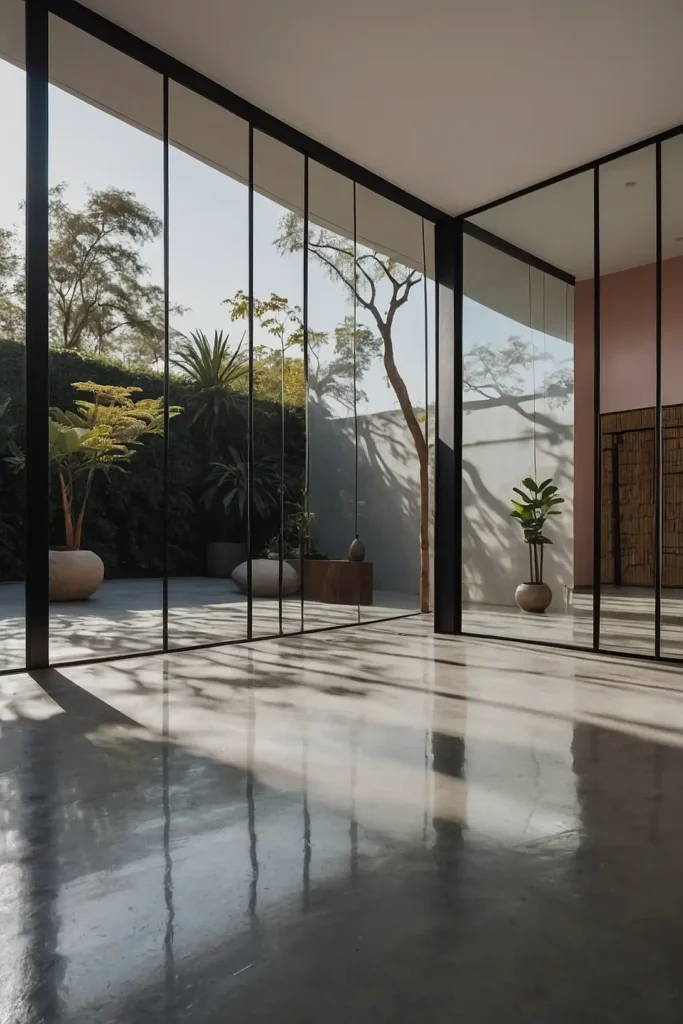
Install large mirrors with minimal framing or frameless designs. Position mirrors to enhance natural light and create spatial depth.
Mirrors help students check alignment and technique safely. Clean mirror installation maintains minimal aesthetic while providing practical teaching tools.
Add retractable covers for meditation-focused classes when needed. This functional element supports both active practice and inward-focused sessions.
23: Water Feature Integration
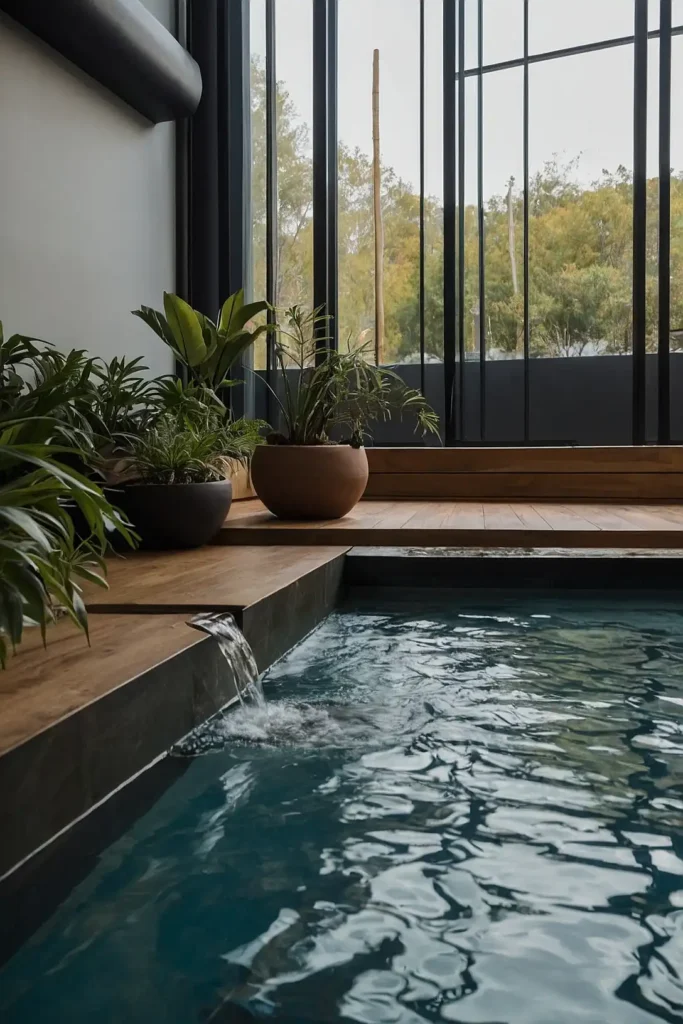
Add a small fountain or water wall for soothing sounds. Choose simple designs that complement rather than dominate the space.
Water sounds mask outside noise while promoting tranquility. Moving water adds negative ions that naturally improve air quality and mood.
Add subtle lighting to highlight water movement gently. This natural element enhances the peaceful atmosphere essential for deep practice.
24: Flexible Lighting Controls
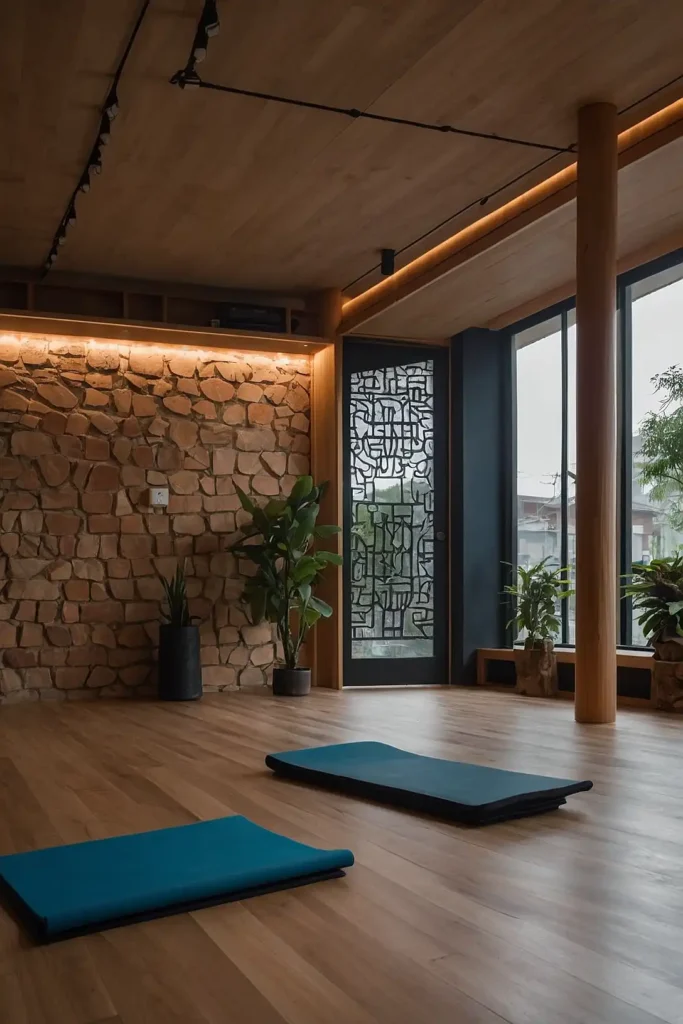
Install multiple lighting zones with dimmer controls throughout. Include options for bright practice lighting and dim restorative atmospheres.
Adjustable lighting adapts to different class styles and times. Proper illumination supports safety during poses while creating appropriate mood for relaxation.
Add circadian lighting that mimics natural daylight patterns. This thoughtful lighting design supports natural energy rhythms and well-being.
25: Natural Edge Wood Details
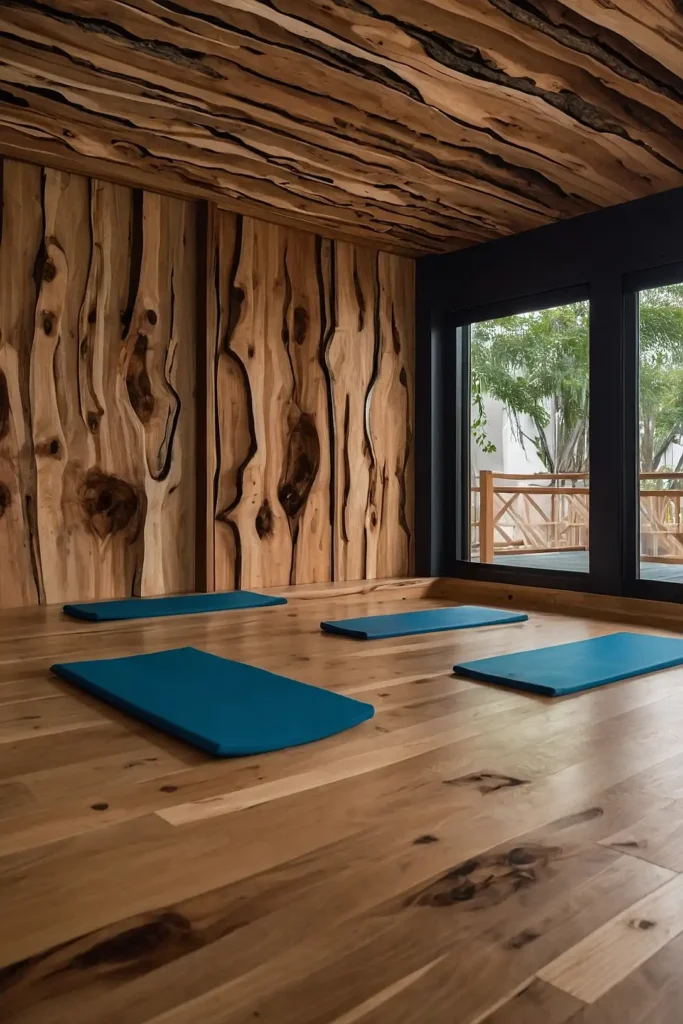
Incorporate live-edge wood shelving and accent pieces sparingly. Choose pieces that highlight natural grain and organic shapes.
Natural edges add organic softness to geometric spaces. Wood details bring warmth while maintaining the clean aesthetic essential to Japandi design.
Add minimal finishing that preserves wood’s natural character. This authentic material connection grounds the space in natural beauty.
26: Textile Wall Hangings
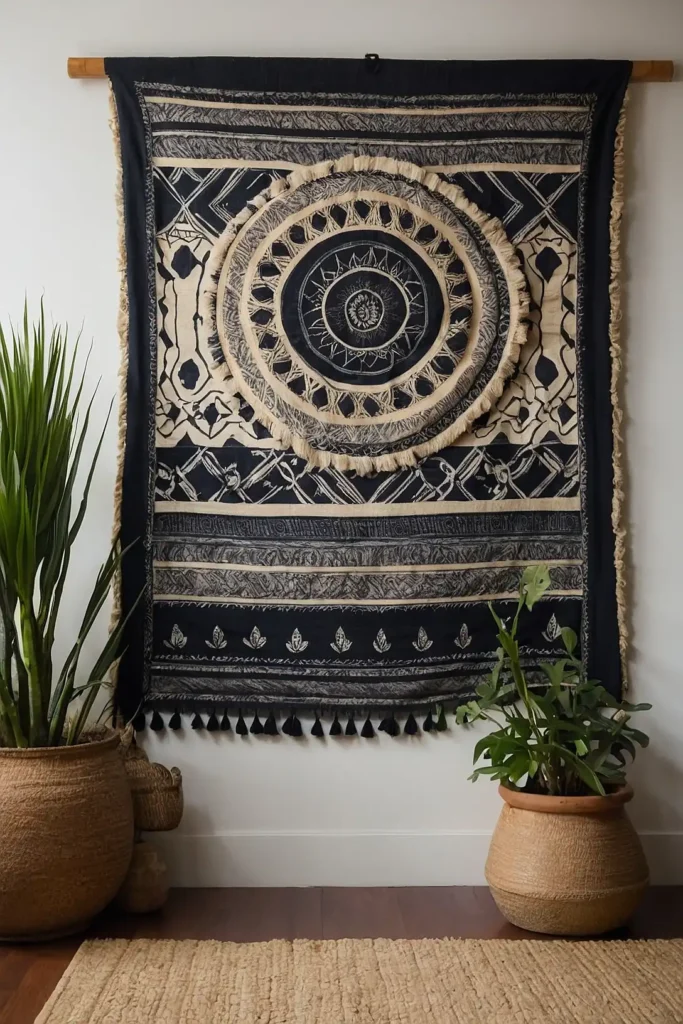
Display simple woven pieces or natural fiber art. Choose neutral colors and geometric patterns that complement the overall design.
Textiles add warmth and visual interest without overwhelming. Wall hangings soften hard surfaces while maintaining the minimal aesthetic essential to focus.
Add pieces that can be easily changed seasonally. This flexible art approach allows subtle variations while preserving core design principles.
27: Sacred Geometry Elements
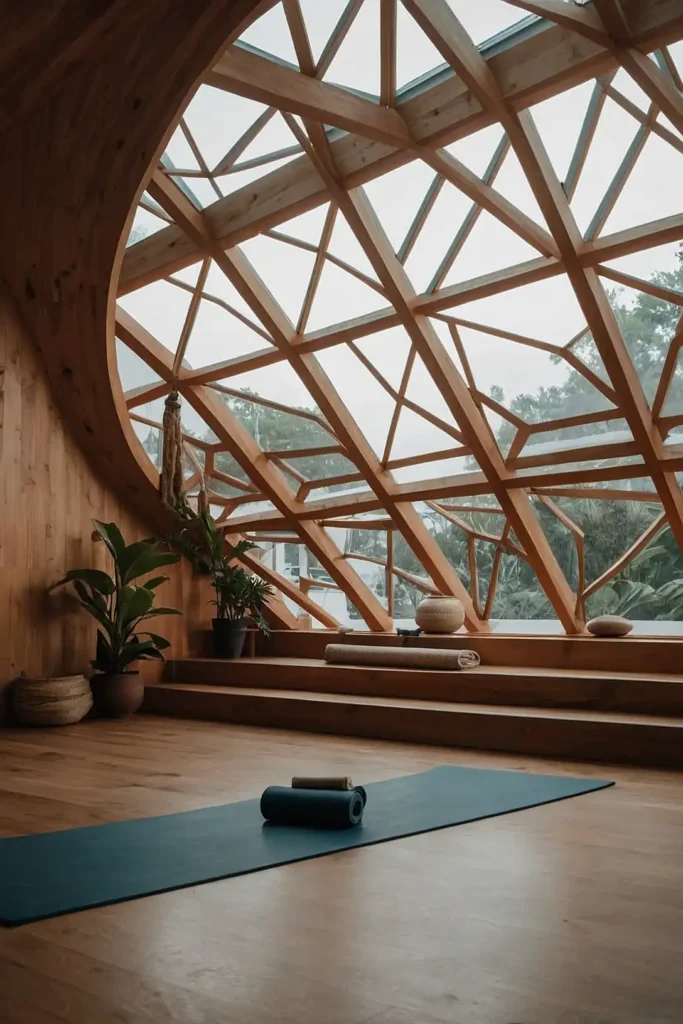
Incorporate subtle geometric patterns in floor inlays or wall details. Use natural materials to create mandalas or simple geometric forms.
Sacred geometry supports meditative focus and spiritual connection. Geometric elements add visual interest while maintaining clean, uncluttered appearances.
Add lighting that highlights patterns during meditation times. This meaningful detail adds depth without compromising the essential simplicity of Japandi design.
Conclusion
These 27 Japandi yoga studio ideas create peaceful sanctuaries for practice.
Blend Japanese minimalism with Scandinavian warmth for ultimate serenity.

